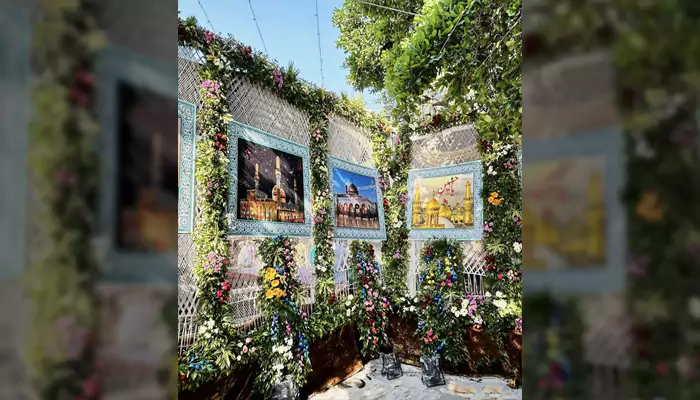2025 Full Moon Calendar Unveiled: Dates, Names & Festivals
- Soham Halder
- 11 months ago
- 5 minutes read

Over the centuries, Full Moons hold a magnetic charm. This monthly occurrence has inspired many myths, tales, and farming activities.
Viewing the night sky allows anyone to make a unique connection with the world beyond Earth’s atmosphere. Since ancient civilizations, people have always observed the skies, recorded the movements of the Sun, Moon, and other planets, and further used them as powerful resources for agriculture and associated important activities.
Science Behind Full Moon:
The Full Moon occurs when the Earth is precisely standing between the Sun and the Moon. This alignment ensures viewing entire side of the Moon gleaming under sunlight. Based on the Moon’s orbit, the sunlight angle hitting the lunar surface and its reflection back to the earth leads to different lunar phases.
A complete cycle from one Full Moon to its next, is known as the lunar month or synodic month, which lasts for 29.5 days.
According to astronomy, each full moon is associated with a unique name, mostly reflecting its agricultural past. These names also help predicting seasonal changes and also tracking the passage of time.
The Dates of Full Moon in 2025:
In 2025, there will be 3 supermoons, but no blue moons. There will be 2 total lunar eclipses too. Full moon or Purnima is a day of great religious significance. It is also considered as an auspicious time for fasting, worship, meditation, and giving. Full moon is believed to be filled with positive energy and spiritual peace.

Jan. 13 - Paush Purnima:
In Hindu calendar, it falls on the Paush month, known for sacred baths and donations. Across India, Makar Sankranti or Sankranti is celebrated on this day. According to The Maine Farmers' Almanac, the full moon in January is called Wolf Moon, which gets its name from the packs of wolves heard howling outside the villages amid the cold and deep snows of winter.
Feb. 12 - Magha Purnima:
On this day, it is believed that taking a bath, donating, and worshipping Lord Vishnu brings virtue. As February is sometimes associated with heavy snowfall in various parts of the world, this full moon is known as Snow Moon.
March 14 - Phalguna Purnima:
The festival of colors, Dol or Holi is celebrated on this Full Moon day. This marks the end of winter and the arrival of spring. As March or spring is the time when the earthworms signal thawing grounds, the full moon on this month is known as Worm Moon.
(Credit - Insta/@ddnational)
April 12 - Chaitra Purnima
This is the first full moon of the year in the Hindu calendar. This also coincides with the Hanuman Jayanti. As pink wildflowers blossom in this time, Full Moon in April is regarded as the Pink Moon.
May 12 - Buddha Purnima:
The full moon day of Vaishakha marks Lord Buddha's birth, enlightenment, and nirvana. To celebrate the blooming of different flowers across the globe, the full moon in May is known as Flower Moon.
June 11 - Jyeshta Purnima:
Devotees offer prayers, perform rituals, and seek blessings for prosperity, health, and familial harmony. This coincides with the Ganga Dussehra. As June is the prime time for strawberry harvesting, the full moon on this season, is called Strawberry Moon.
July 10 - Guru Purnima:
This auspicious day symbolizes gratitude, learning, and wisdom, inspiring devotees to reflect on knowledge and their guru’s guidance. In the honor of recognizing the new antlers on bucks, Full Moon on July is named as Buck Moon, according to native American literature.

Aug. 9 - Sravana Purnima:
It marks Raksha Bandhan and Yajurveda Upakarma, symbolizing devotion, sibling bonds, and the renewal of spiritual commitments. Apart from that, as August experience the abundance of sturgeon fish, the full moon is called Sturgeon Moon.
Sept. 7 - Bhadrapada Purnima:
It’s a time for honoring ancestors and seeking their blessings. In American literature, to indicate the corn harvesting period in September, the full moon on September is the Harvest Moon which is also a blue moon.
Oct. 6 - Sharad Purnima:
Celebrated on the full moon of Ashvin month (Hindu calendar), this day is dedicated to honor knowledge and wisdom. Commemorating the hunting season just before the winter, the full moon in October is regarded as Hunter's Moon, which is also a supermoon this year.
(Credit - Insta/@travelxptv)
Nov. 5 - Kartik Purnima:
On this day, devotees worship Lord Vishnu, perform holy baths in rivers, and celebrate the festival of lights, Dev Deepavali. As beavers become very busy on building their winter dams, this full moon is called Beaver Moon. We will also observe a supermoon on this day too.
Dec. 4 - Margashirsha Purnima:
On the last full Moon of 2025, Margashirsha Purnima is observed, which is dedicated to Lord Vishnu. To signify the extreme cold condition in winter, the full moon in December is known as Cold Moon.
Although the full moon is not the best time for observing the lunar surface, the celestial charm of the full moon is hard to beat. In their attractive different forms, Full Moons reflect the enduring captivation of human beings towards the unknown world of cosmos.












